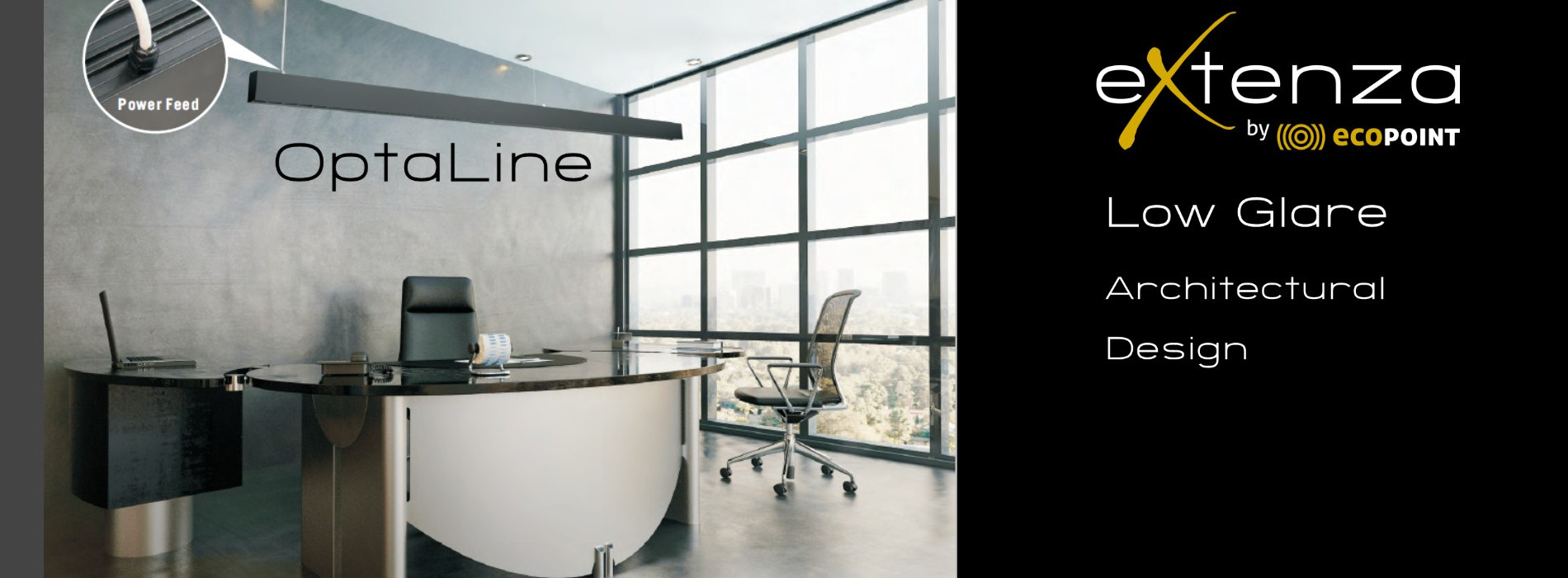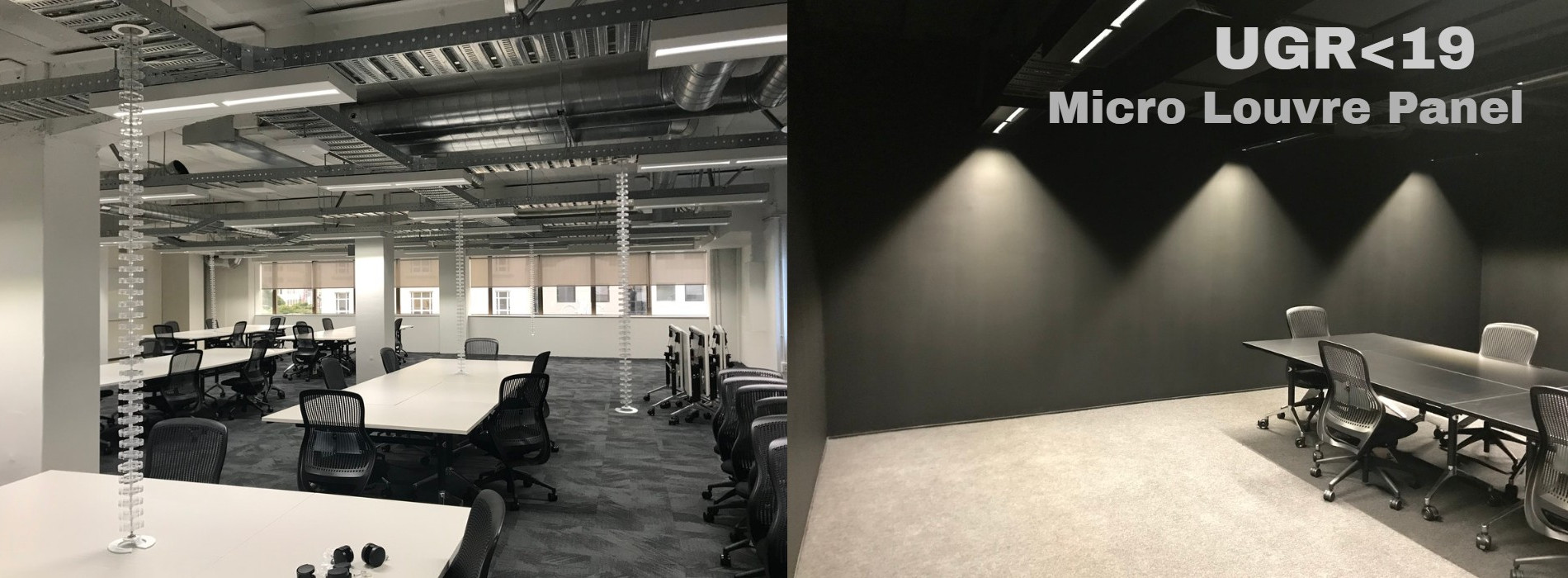Colour rendering
Expressed by Colour Rendering Index (Ra); describes the degree of colour shift objects undergo when illuminated by the light source as compared with the colour of those same objects when illuminated by a reference source, of comparable colour temperature. The index is a scale between 1 (effectively monochromatic light) and 100 (perfect rendition of all colours). Most commercial lighting requires a CRI of Ra>80.
Colour temperature
Expressed by Correlated Colour Temperature (CCT, in K); describes the colour appearance of light emitted by a light source, relating its colour to the colour of light from a reference source when heated to a particular temperature, measured in degrees Kelvin (K). The CCT rating for a lamp is a general "warmth" or "coolness" measure of its appearance. However, opposite to the temperature scale, lamps with a CCT rating below 3200 K are usually considered "warm" sources, while those with a CCT above 4000 K are usually considered "cool" in appearance. Most commercial lighting is specified as 4000K.
Colour tolerance
Expressed by MacAdam Ellipses or Standard Deviation of Colour Matching (SDCM); describes the differences in light colour from one LED to another (or one luminaire to another). When LED chips are manufactured, tolerances occur which can result, among other things, in differences in light colour. LEDs are therefore tested after they are manufactured and sorted into tolerance classes. If the colour (chromaticity) coordinates of a set of LEDs all fall within 1 SDCM (or a “1-step MacAdam ellipse”), most people would fail to see any difference in colour. If the colour variation is such that the variation in chromaticity extends to a zone that is twice as big (2 SDCM or a 2-step MacAdam ellipse), you will start to see some colour difference. It is typically accepted that a colour tolerance of 4 SDCM or less for commercial lighting will result in minimal noticeable variations for a casual observer.
Dimming
Refers in general to the capability of adjusting a luminaire’s flux across a range from full power down to a specified minimum (often 10%, but sometimes lower). Dimming can be controlled in a number of ways, but the typical methods used in commercial lighting are DALI (a digital communication protocol), 1-10V (uses a low-voltage analogue signal) or phase/mains dimming (regulates the supply voltage to the luminaire).
Driver
Refers in general to a power supply/converter unit which receives mains-voltage alternating current power (230-240V AC in New Zealand) and outputs direct current (DC) power at a specified voltage and current suitable for powering LED components. Drivers can be fixed output (meaning the LEDs always operate at full power) or dimmable (meaning the flux from the LEDs can be adjusted). As the power regulator of the luminaire system, the driver is a particularly important component and its reliability is a key factor in overall luminaire service life. Note that the equivalent component in a conventional fluorescent or discharge luminaire was referred to as a ‘ballast’, of which there are two kinds; magnetic and electronic.
Emergency lighting
Refers to lighting that operates in the event of an interruption to the mains power in or around a large building. Requirements for emergency lighting (and the closely associated exit signage) are specified in clauses F6 and F8 of the New Zealand Building Code. Power for emergency lighting can be supplied by either by a centralised battery/UPS, and quick-response generator or individual back-up batteries. The latter is most common in modern fit-outs and is generally regarded as the most cost-effective arrangement to operate and maintain in the long term. Emergency lighting can be provided either by dedicated emergency lighting devices or the capability can be integrated into general lighting luminaires.
Glare
The presence of bright light (in high contrast to its surrounds) which can either cause discomfort or simply impair vision. In a lighting context, glare is quantified by the Unified Glare Rating (UGR) which is a dimensionless scale with a lower figure indicating less glare. Ratings typically fall within the range of 13 (just perceivable) through to 28 (uncomfortable for extended periods). Office lighting standards typically require a UGR value of 19 or less.
Illuminance
Expressed in lux (lx); describes the amount of luminous flux falling on to (illuminating) a specific surface. One lux is equal to one lumen spread over one square meter (i.e. 1 lm/m2 = 1 lux).
Impact protection
Expressed by an ‘IK’ rating from 0 to 10; defines the amount of protection the luminaire has against mechanical impact with varying levels of energy. IK02-rated luminaires are typically adequate for most commercial interior environments, whereas IK08 to IK10 ratings are typically required if there is a possibility of vandalism or likelihood of collision with objects.
Ingress protection
Expressed by an ‘IP##’ rating, where the first digit (from 1 to 6) indicates increasing protection against the ingress of solids/bodies and the second digit (from 1 to 8) indicates increasing protection against the ingress of moisture/water. Simple ‘enclosed’ (i.e. IP20-rated) luminaires are typically adequate for most commercial interior environments, although dust-proof (i.e. IP5X) luminaires typically require less frequent cleaning. Luminaires being used in damp locations (i.e. bathrooms, showers) normally require IP44 ratings or greater, while luminaires in exterior environments normally require IP54 ratings if installed in sheltered locations or IP65 or greater if installed in exposed locations.
Input power
Expressed in watts (W); describes the total amount of electrical power drawn by the luminaire (which therefore includes any electrical losses/inefficiencies in the luminaire power system).
Lamp
Refers to a removable/replaceable light source for a conventional luminaire (i.e. incandescent, halogen fluorescent etc).
Lumen maintenance
Expressed by an ‘Lxx Byy @ zz,000 hours’ rating; defines the rate at which luminous flux depreciates over time. The xx digits refer to the amount of flux ‘maintained’, which is simply 100% minus the proportion of initial flux that has depreciated. The yy digits refer to the proportion of luminaires/light sources within a nominal population that would not meet the xx target flux-specification. So, a luminaire with a lumen maintenance specification of L80 B10 @ 50,000 hours refers to 20% depreciation (i.e. 80% maintenance) of flux over that 50,000 hours and clarifies that at least 90% of those luminaires would achieve that 80% or greater maintenance specification (i.e. 10% would depreciate by more than 20%). Lumen maintenance specifications must be derived by the industry-standard TM-21 projection method, which uses data from long-term LED testing (LM-80 report, with a minimum of 6,000 hours testing) and in-situ luminaire temperature testing.
Luminaire
A complete lighting unit, which typically consists of a light source, some means of directing/distributing light, a power supply or converter and connection to a power source, and various mechanical components for mounting and protecting the electrical and optical parts.
Luminaire efficacy
Expressed in lumens-per-watt (lm/W); describes the overall effectiveness of the luminaire system in converting electrical power into useable light. It is calculated by dividing the luminaire flux (lm) by the input power (W).
Luminaire flux
Specifically describes the total ‘net’ system luminous flux (including any light losses resulting from reflectors, diffusers and/or lenses), rather than just the gross flux from the light source within that luminaire.
Luminous flux
Expressed in lumens (lm); describes the quantity of light (energy) emitted from a light source.
Luminous intensity distribution
Described by intensity distribution curves, which show the luminous intensity of light emitted from the luminaire at various polar angles in all three dimensions. These curves are typically documented by 2D polar plots showing distribution in planes both longitudinal and transverse to the axis of the luminaire.
Optic/s
Refers in general to the components in a luminaire used to direct and/or distribute light. These can be simple reflectors or diffusers right through to complex micro-lens arrays, and they are typically formed from various types of metals or plastics. As these components modify the raw flux emitted by the light source, their design and the materials used influence the proportion of light lost in reflection and/or refraction, and therefore influence the efficacy of the luminaire as well as the light distribution.
Uniformity
Expressed as a ratio between the average illuminance on a task area/plane and either the maximum or minimum illuminance value on that same area/plane. The most common reference to uniformity is in terms of average (Eavg) and minimum (Emin) illuminances, and this describes how evenly the illuminance is distributed across a discrete area.


